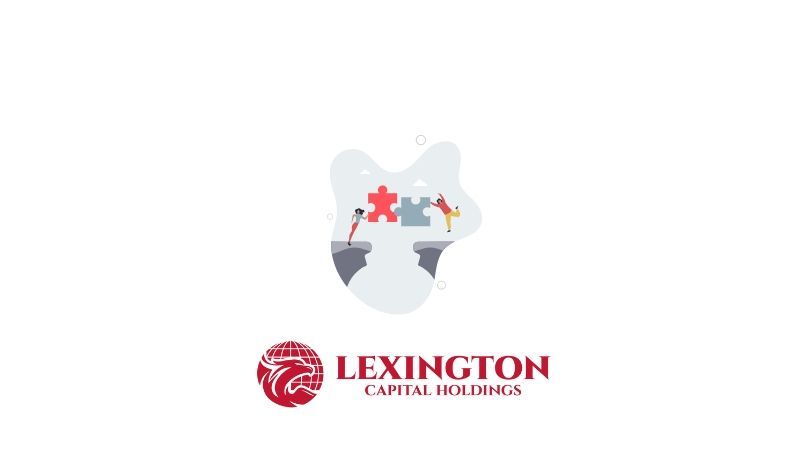Elevate Your Career: Must-Read Books for Professional Development
Elevate Your Career: Must-Read Books for Professional Development
Achieving career success requires more than just technical skills; it demands continuous learning and personal growth. One of the most effective ways to advance your professional journey is by diving into books that offer valuable insights and strategies. Here are some top recommendations to help you on your path to professional excellence:
1. "How to Win Friends and Influence People" by Dale Carnegie
A timeless classic, this book is essential for anyone looking to enhance their interpersonal skills. Carnegie’s advice on building lasting relationships and positively influencing others remains incredibly relevant. His principles of engaging with people, gaining their trust, and winning them over are foundational for personal and professional success.
2. "The 7 Habits of Highly Effective People" by Stephen R. Covey
Covey’s influential work provides a comprehensive approach to achieving personal and professional effectiveness. The seven habits he outlines, such as "Be Proactive" and "Begin with the End in Mind," offer a structured pathway to cultivating a disciplined and goal-oriented mindset. Covey’s focus on character ethics rather than just superficial traits makes this a must-read.
3. "Drive: The Surprising Truth About What Motivates Us" by Daniel H. Pink
Pink delves into the science of motivation, challenging conventional wisdom about what drives us. He argues that true motivation is powered by autonomy, mastery, and purpose. This book is particularly valuable for leaders and managers looking to create environments where their teams can thrive and achieve their best work.
4. "Lean In: Women, Work, and the Will to Lead" by Sheryl Sandberg
In this inspiring book, Sandberg, Facebook’s COO, addresses the challenges women face in the workplace and encourages them to pursue their ambitions. "Lean In" offers practical advice for overcoming obstacles and achieving leadership roles. Its messages of confidence and resilience are beneficial for all professionals, regardless of gender.
5. "Mindset: The New Psychology of Success" by Carol S. Dweck
Dweck’s research on the concept of mindset has profound implications for personal and professional growth. She distinguishes between fixed and growth mindsets, emphasizing the importance of embracing challenges and learning from failures. This book is a powerful guide to unlocking your potential through a positive and flexible mindset.
6. "Grit: The Power of Passion and Perseverance" by Angela Duckworth
Duckworth explores how grit, defined as passion and perseverance over the long term, is a critical factor in achieving success. Her research shows that sustained effort and dedication often outweigh innate talent. This book is an essential read for anyone looking to develop resilience and maintain focus on their long-term goals.
7. "The Lean Startup: How Today's Entrepreneurs Use Continuous Innovation to Create Radically Successful Businesses" by Eric Ries
Ries offers a fresh perspective on business development with his Lean Startup methodology. By emphasizing rapid prototyping, validated learning, and iterative product releases, this approach helps entrepreneurs build successful businesses more efficiently. It’s a valuable resource for anyone involved in innovation and startup environments.
8. "Good to Great: Why Some Companies Make the Leap...And Others Don’t" by Jim Collins
Collins and his team examine why some companies transition from good to great while others do not. The book identifies key factors such as disciplined people, thought, and action that contribute to long-term success. It’s a crucial read for those interested in understanding what drives organizational excellence.
9. "Emotional Intelligence 2.0" by Travis Bradberry and Jean Greaves
This book emphasizes the importance of emotional intelligence (EQ) in professional success. Bradberry and Greaves provide strategies for improving your EQ through self-awareness, self-management, social awareness, and relationship management. Included is an online assessment tool that offers a detailed analysis of your EQ and practical steps for enhancement.
10. "The Power of Habit: Why We Do What We Do in Life and Business" by Charles Duhigg
Duhigg explores the science behind habits, explaining how they are formed and how they can be changed. By understanding the habit loop of cue, routine, and reward, readers can learn to transform negative habits into positive ones. This book is a great resource for boosting productivity and personal growth.
11. "Atomic Habits: An Easy & Proven Way to Build Good Habits & Break Bad Ones" by James Clear
Clear's "Atomic Habits" is a comprehensive guide to making small changes that lead to significant results. He presents actionable strategies for forming good habits, breaking bad ones, and mastering tiny behaviors that lead to personal and professional improvement. This book is invaluable for anyone looking to achieve lasting change.
Embracing continuous learning through these books can significantly enhance your professional development. Each offers unique insights and practical advice to help you navigate your career, improve your skills, and achieve your goals. Whether you’re at the beginning of your career or looking to advance to the next level, these reads provide invaluable guidance for growth and success. Happy reading!

When you apply for business funding, your application goes through a critical stage—underwriting. This is where lenders evaluate risk and determine whether your business qualifies for financing, and under what terms. Understanding what underwriters look for can help you strengthen your application, avoid delays, and increase your approval odds.

Not every business enjoys a steady stream of income. For many companies—especially those in seasonal industries, contracting, or project-based work—revenue can shift dramatically from month to month. These ups and downs are normal, but they can make managing cash flow, payroll, and operating expenses challenging. At Lexington Capital Holdings, we understand that fluctuating revenue doesn’t mean instability—it just means you need the right financial tools to stay balanced and grow confidently.

The Challenge of Hyper-Growth For many startups, growth isn’t the problem—it’s managing it. Rapid scaling demands capital for hiring, marketing, technology, and operations. But too often, founders find themselves cash-strapped right when they need resources the most. Choosing the right financing strategy can be the difference between sustainable growth and burning out too soon.

When it comes to business financing, the terms you secure are just as important as the funding itself. Lower interest rates, flexible repayment schedules, and higher approval amounts can mean the difference between simply surviving and setting your business up to thrive. The good news? Business owners often have more negotiating power than they realize. At Lexington Capital Holdings, we’ve seen firsthand how preparation and strategy can help secure stronger terms. Here’s how you can do the same:

For many businesses, waiting on customer payments can feel like standing still when you’re ready to move forward. Delayed invoices, extended payment terms, or slow collections create cash flow gaps that make it harder to cover expenses, pay employees, or seize new opportunities. The truth is—even successful, profitable companies face this challenge. The key isn’t avoiding it, but managing it strategically with the right funding solutions

Securing business funding is a milestone—but the real impact comes from how you put that capital to work. Every dollar borrowed should fuel momentum, strengthen operations, and generate measurable returns. Unfortunately, too many businesses stop at “getting approved” and miss the chance to maximize their return on investment (ROI). At Lexington Capital Holdings, we believe funding isn’t just about access to capital—it’s about creating opportunity. Here’s how to ensure your financing delivers the highest ROI:

In today’s fast-paced business environment, standing out from the competition requires more than just great products and services—it takes strategy, timing, and smart financial decisions. One of the most overlooked tools in building and maintaining a competitive advantage is business financing. When leveraged correctly, financing doesn’t just help you “get by”; it can actually position your business to outpace competitors and capture new opportunities.

In business, surprises aren’t a matter of if—they’re a matter of when. Whether it’s a sudden equipment breakdown, an unexpected dip in sales, or a market shift that requires quick adaptation, unforeseen expenses can test even the most successful companies. The difference between thriving and struggling often comes down to how well you’ve prepared.

When most business owners hear the word debt, it sparks feelings of stress or risk. But here’s the truth—debt isn’t always a bad thing. In fact, when managed strategically, debt can become one of the most powerful tools to grow, stabilize, and scale your business. At Lexington Capital Holdings, we work with business owners every day who are navigating this very question: Is taking on debt the right move for me? Let’s break down the difference between “good” and “bad” debt so you can make informed financial decisions.

In today’s business world, financing options are everywhere—but choosing the right path can feel overwhelming. From traditional bank loans to alternative lending solutions, the fine print and fast-changing requirements often leave business owners spending more time deciphering funding terms than actually running their businesses. That’s where the value of a dedicated funding advisor truly shines. At Lexington Capital Holdings, we’ve seen firsthand how personalized guidance can transform the funding experience for business owners of all sizes.

